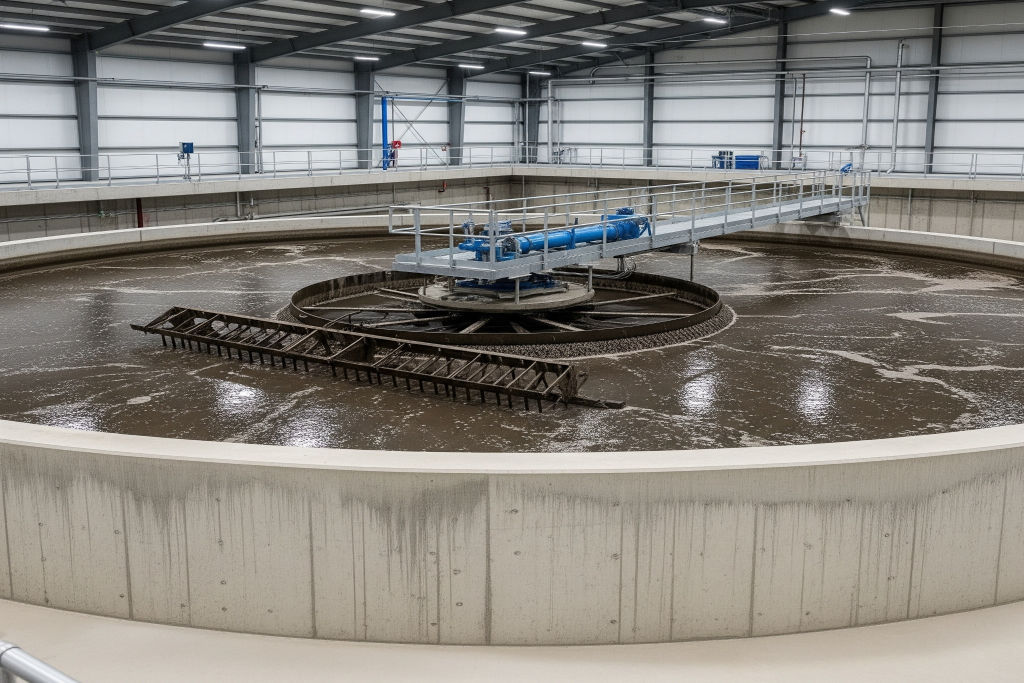What Are Sewage Treatment Plants & How They Work?
In treating the waste water by households, industries and commercial properties, sewage treatment plants (STPs) are considered vital. They curb water pollution and risk the lives of the people by making sure that sewage is treated before letting them into the environment. But how and what exactly are the sewage treatment plants? The meaning of sewage treatment plants, their operation, and their significance for preserving environmental sustainability will all be covered in this extensive guide.

What Is a Sewage Treatment Plant?
A sewage treatment plant is a plant with the purpose of eliminating pollutants from wastewater and sewage. The treatment process has various stages, such as physical, chemical, and biological treatments, to guarantee that the treated water is safe for release or reutilization. Knowing the sewage treatment plants’ meaning enables us to understand their function in maintaining water quality and averting environmental risks.
Why Are Sewage Treatment Plants Important?
The importance of sewage treatment plants cannot be overstated. They serve several critical functions, such as:
- Avoiding spread of water pollution through treatment of sewage before being delivered to the natural water bodies.
- Minimizing water-related diseases by killing the dangerous bacteria and pathogens.
- Encouraging conservation of water by reusing and recycling of wastewater.
- Preservation of aquatic life by inspection of the discharged water which conforms to the safety standards of the environment.
- Enhancing sustainable urbanization through the efficient management of wasted water.
Lack of proper sewage treatment means that the untreated waste water may cause serious environmental and health problems, including contamination of water sources used to consume, eutrophication of the water bodies among other diseases.
How Do Sewage Treatment Plants Work?
When you are asking yourself a question of how do sewage treatment plants work, the process can be divided into three major phases:
1. Primary Treatment
The first stage of the sewage treatment process involves removing large solids and debris from wastewater. This is done by:
- Screening: It involves the removal of big items such as plastics, rags and leaves through use of screens.
- Grit Removal: Gritty materials such as sand, gravel among others are settled in a grit chamber.
- Sedimentation: The wastage water is left to stand still on a primary clarifier where heavier material sinks to the base as a sludge and the lighter ones float on the top.
2. Secondary Treatment (Biological Treatment of Sewage)
The biological treatment of sewage is a crucial step in removing dissolved organic matter. The microorganisms are very significant in the process of degrading waste substances by the following methods:
- Activated Sludge Process: Aeration tanks are fitted with air supplies that push out to stimulate the growth of bacteria in the presence of organic pollutants, which are then consumed.
- Trickling Filters: In this process wastewater is sprayed on a bed of stones or other plastic material where the bacteria decomposes the pollutants.
- Lagoons and Oxidation Ponds: In this process, big ponds are used to enable microbial processes to clear wastewater.
The water is surrendered to secondary clarifiers after biological treatment to undergo some further settling as well as the extraction of sludge that is processed further.
3. Tertiary Treatment (Advanced Treatment)
Any contaminants that might have been left behind are deducted during this last stage to improve the quality of water. Important processes are:
- Filtration: Very fine material and pathogens are removed by sand or membrane filters.
- Chemical Treatment: Water is also disinfected with Chlorination or UV light.
- Nutrient Removal: Phosphorus and nitrogen compounds are removed to avert the occurrence of eutrophication.
Once the sewage treatment process is complete, the treated water can be safely discharged into rivers, lakes, or used for irrigation and industrial processes.
Challenges and Future of Sewage Treatment Plants
Although sewage treatment plants are a must, they pose problems of high energy use, costs of operation, and high-end technology requirements. Decentralized wastewater treatment, intelligent monitoring systems, and energy-saving processes are changing the face for more environmentally friendly solutions.
Conclusion
Knowing the meaning of sewage treatment plants, the process of sewage treatment, and biological treatment of sewage emphasizes their role in environmental protection. By effectively treating wastewater, sewage treatment plants are aiding public health, water conservation, and ecological harmony. With the evolution of technology, advanced sewage treatment plants will remain an integral part of a clean, healthier planet.
Frequently Asked Questions (FAQs)
The main purpose of a sewage treatment plant is to remove harmful contaminants from wastewater, making it safe for disposal or reuse. This prevents pollution and protects public health.
Biological treatment of sewage uses microorganisms to break down organic waste. This is done through processes like the activated sludge method, trickling filters, and oxidation ponds, which help remove dissolved impurities effectively.
The sludge collected during treatment is processed further. It can be composted, used for energy production, or safely disposed of in landfills, depending on local regulations and treatment methods.
Yes, after proper treatment, sewage water can be reused for industrial cooling, irrigation, and even as drinking water in some advanced systems. However, it must meet strict safety standards.
Efficiency can be improved by using energy-efficient equipment, recycling treated wastewater, implementing smart monitoring technologies, and reducing wastewater generation at the source.












